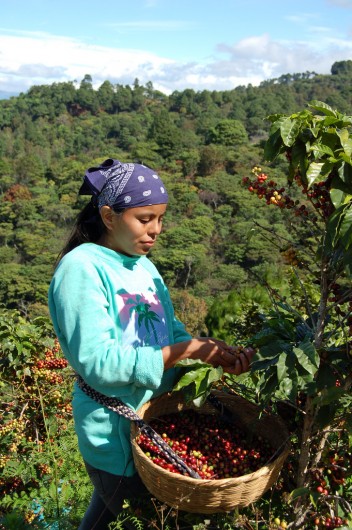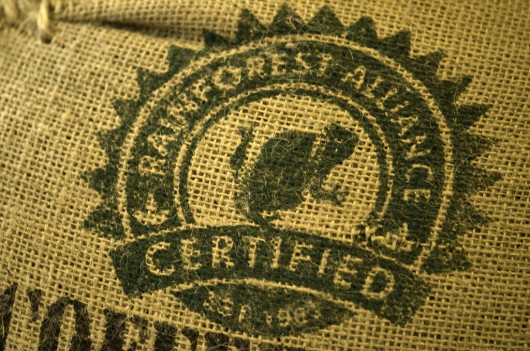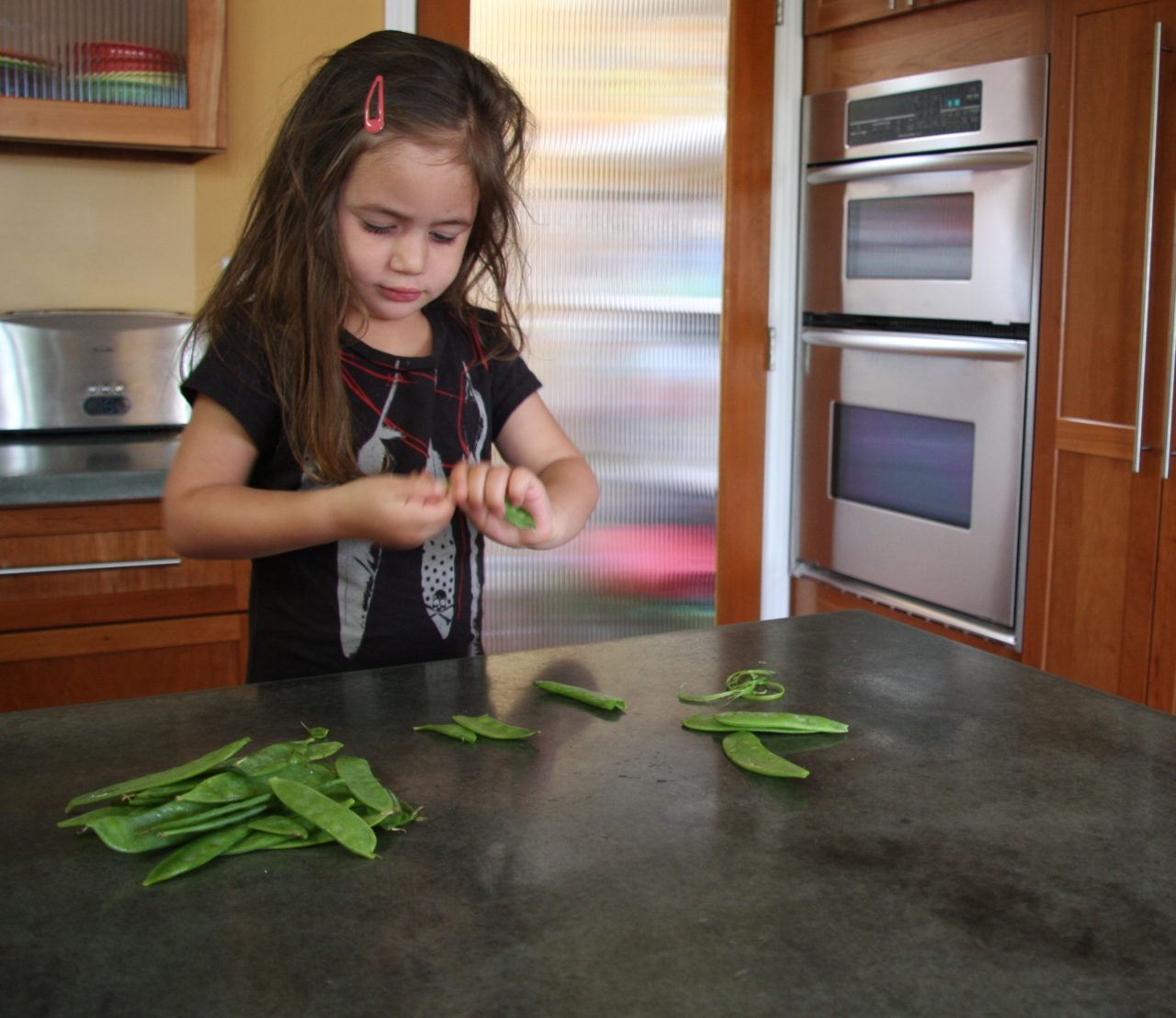Thank you to Alex Morgan, of Rainforest Alliance, for today’s guest post on coffee production and how to make sure your cup of joe comes from sustainably grown beans.
Coffee: From Bean to Cup
Approximately 400 million cups of coffee are consumed each day in the U.S. alone, often without a thought to where or how those beans were grown. In fact, the world’s coffee is produced in the tropics by more than 25 million people, and most coffee farms are located in areas regarded as high priorities for conservation.
Coffee is grown on trees that can reach 20 feet in height, but are usually cultivated to 10 feet for easy picking. The coffee bean is actually a seed inside a red cherry. When coffee is grown traditionally — under the shade of the forest canopy – cherry harvesting is labor intensive and must be done by hand. Once picked, the pulp of the cherry is stripped, leaving behind two green beans. The beans are then processed, dried and shipped. Finally, the beans are roasted.
Coffee farmers face a number of challenges including profitability, inclement and fluctuating weather, pests and diseases, rising costs and sometimes challenging government policies.
Traditionally cultivated under the shade of the forest canopy, new coffee varieties were developed in the 1970’s to grow in the sun. While sun-grown coffee generates higher yields, this farming method often leads to deforestation, heavy agrochemical use, soil erosion, water pollution and the destruction of wildlife habitat. The new methodologies were not only environmentally destructive, but put more beans into an overstocked market, converting coffee farms from self-sustaining sanctuaries into stark and lifeless monocultures.
The Rainforest Alliance is working to bring coffee back into more natural cultivation, restore local ecosystems and protect wildlife habitat.
To achieve Rainforest Alliance certification, farms must meet strict sustainability standards that protect the environment and the rights and well-being of workers and their families. Certified farms conserve biodiversity, prevent deforestation, protect waterways, recycle waste, reduce agrochemical use and provide habitat for wildlife. In addition, workers operate in safe conditions, earn just wages and have access to decent housing, medical care, and education for their children. More than 43,500 coffee farms are Rainforest Alliance Certified, and approximately 900,000 acres of farmland are sustainably managed.
Rainforest Alliance certification helps farmers bear the erratic swings in the global market by giving them the keys to improved farm management, leverage when negotiating sales and prices and access to premium markets. Through certification, farmers learn the importance of protecting their natural resources and are given the financial incentive to do so.
To meet increasing consumer demand for sustainably produced goods, more coffee companies around the world are sourcing their beans from certified farms. Approximately 114,884 metric tons of certified coffee was sold in 2010, an increase of 31 percent from 2009.
Coffee lovers everywhere can support farmers and environmental stewardship in coffee growing communities around the world by buying beans stamped with the Rainforest Alliance Certified seal of approval. Check out these brands which feature our green frog seal:
For more information about how Rainforest Alliance certification benefits both the environment and coffee farming communities across the globe, check out our sustainable coffee website, SealYourCup.org.
** All images provided by Rainforest Alliance.









No Comments